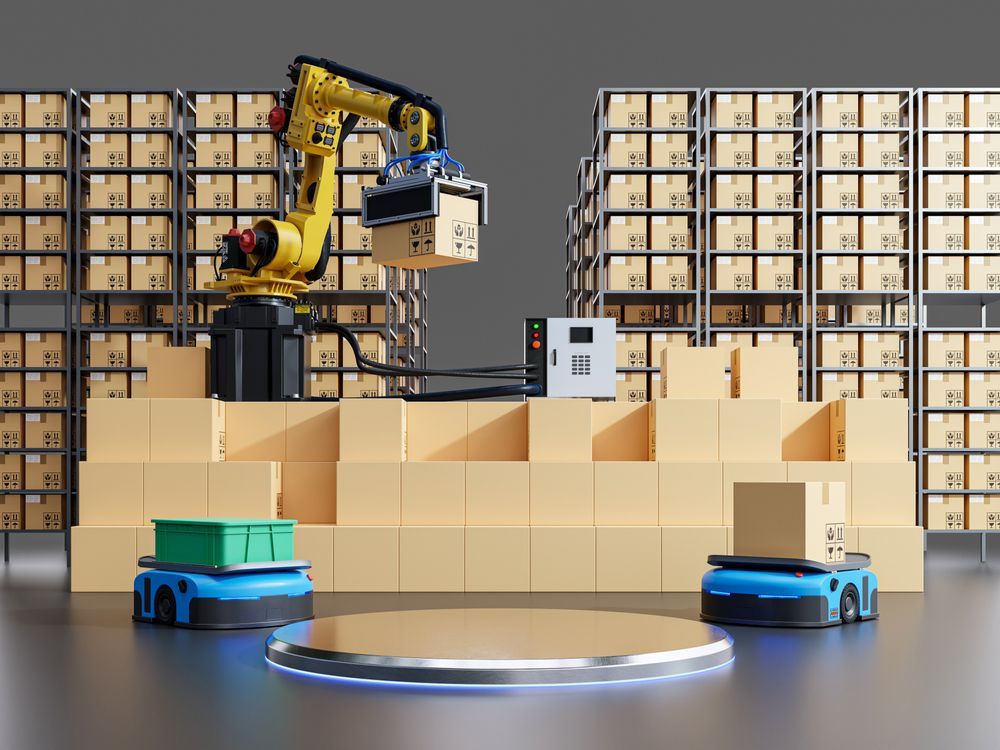Revolutionizing Logistics: How Augmented Reality is Transforming Operations and Training
Discover how augmented reality is revolutionizing logistics through successful case studies and innovative implementations that boost efficiency and training.
Introduction to Augmented Reality in Logistics
Augmented reality (AR) is a transformative technology that overlays digital information onto the physical environment, significantly enhancing real-time decision-making and operational efficiency within the logistics sector. This innovative approach allows workers to visualize critical data, such as inventory levels and navigation routes, directly in their field of view, leading to more informed choices and streamlined processes. The AR market in logistics is projected to experience exponential growth, expected to rise from $35 billion in 2021 to an astounding $246 billion by 2027, showcasing the technology's vast potential.
One of the most compelling advantages of implementing AR in logistics is its ability to reduce training costs by up to 50%. Interactive experiences facilitated by AR allow workers to learn on-the-job in a hands-on manner, which not only fosters engagement but also significantly improves knowledge retention. Additionally, AR enhances safety protocols by providing real-time, contextual guidance to operators, thereby minimizing the likelihood of accidents and operational errors.
Overview of Successful AR Implementations
Several leading logistics companies have successfully integrated AR technology into their operations, yielding impressive results. For instance, DHL's pilot project utilizing AR-enabled smart glasses for 'vision picking' resulted in a remarkable 25% increase in picking efficiency, highlighting how AR can optimize manual tasks. Similarly, XPO Logistics adopted AR for precise picking assignments and incorporated virtual reality (VR) in training programs, which significantly enhanced learning retention and productivity. These implementations demonstrate the tangible benefits that AR can bring to logistics operations.
Moreover, firms like Ricoh and Ubimax have developed customized AR solutions to streamline logistics processes and reduce the time spent on repetitive manual tasks. Successful AR deployments usually commence with pilot projects that allow companies to assess the technology's effectiveness before committing to broader application. This phased approach provides valuable insights that inform future implementations and ensure a smoother transition.
Case Study: AR in Warehouse Management
AR applications in warehouse management are revolutionizing how companies optimize operations. For example, Boeing reported a 25% improvement in efficiency after integrating AR with their Warehouse Management Systems (WMS). This technology enables real-time navigation assistance, aiding workers in locating items quickly and accurately. By displaying optimal storage locations and routes, AR reduces the time spent searching for products, ultimately leading to faster order fulfillment.
Additionally, AR has been shown to significantly decrease error rates during order picking processes. By providing visual guidance and step-by-step instructions, AR not only enhances the accuracy of inventory management but also improves overall customer satisfaction by ensuring timely and correct deliveries. The integration of AR technologies in warehousing demonstrates a clear shift toward smarter, more responsive logistics operations.
Case Study: AR in Training and Development
The impact of AR on training and development within logistics cannot be understated. By offering immersive and interactive learning experiences, AR has transformed traditional training methods, leading to improved retention rates among employees. For instance, DHL and Johnson & Johnson Vision Care have successfully utilized AR for training, significantly reducing training times while allowing experienced personnel to focus on production tasks. This innovative approach has proven to increase employee engagement and confidence in operational tasks.
Moreover, AR facilitates remote assistance features, enabling new hires to receive real-time support from seasoned staff during on-the-job training. This not only accelerates the onboarding process but also fosters a collaborative work environment. By integrating AR into training programs, companies can ensure their workforce is well-prepared to meet the demands of an evolving logistics landscape.
Benefits Realized from AR Integration
The integration of AR in logistics has led to numerous benefits for organizations, including improved support for operators and enhanced productivity. Companies have reported significant reductions in error rates associated with order picking and inventory management, largely due to the real-time information and visual guidance provided by AR applications. For example, organizations utilizing AR technologies have experienced decreased labor costs as a result of increased operational efficiency, which reduces the reliance on manual processes.
In terms of visibility, AR applications allow for better tracking of inventory and assets throughout the supply chain. This newfound transparency enables logistics companies to respond more swiftly to customer demands and market changes, ultimately leading to a more agile and responsive supply chain.
Challenges and Solutions in AR Adoption
Despite its many advantages, the adoption of AR in logistics presents several challenges that organizations must navigate. Technical limitations of AR systems, coupled with resistance to change among employees and skill gaps, can hinder successful implementation. To address these issues, many organizations have found success in conducting pilot projects to assess AR solutions before wider deployment. This approach allows for data collection and adjustments based on real-world performance.
Additionally, ethical considerations, such as fears of workforce displacement, must be addressed to cultivate a supportive environment for AR adoption. Collaborating with AR technology providers can also help logistics companies design tailored solutions that cater to their specific operational requirements, ultimately easing the transition to AR-enhanced processes.
Future Trends of AR in Logistics
Looking ahead, the integration of AR with other cutting-edge technologies, such as artificial intelligence (AI) and the Internet of Things (IoT), is expected to enhance predictive maintenance and streamline workflows within logistics. Future research will likely focus on developing decision-making models that guide logistics managers in effectively adopting AR technology, ensuring that investments yield maximum returns.
Advancements in AR hardware, including lighter and more user-friendly devices, are anticipated to drive wider adoption among logistics firms. As major logistics companies continue to invest in AR, innovation will flourish, leading to new applications that further enhance operational efficiency. The future of AR in logistics promises to redefine industry standards and elevate supply chain performance to unprecedented levels.

March 31, 2025
3S’s "What’s AI in the Supply Chain" Workshop set to begin in Lugano.
In Lugano, business leaders from companies within the supply chain industry will discuss current challenges and the future developments of technology such as artificial intelligence.
Let's start today!
Begin with assessing your existing logistics processes to identify areas that can be automated: we mey help you understand where automation can bring the most significant benefits to your business.

3S Service, Sales&Support GmbH
Sonnenbergstrasse, 19 – 6052 Hergiswil NW
VAT #: CHE-461.428.412
service@3sautomation.eu | sales@3sautomation.eu



